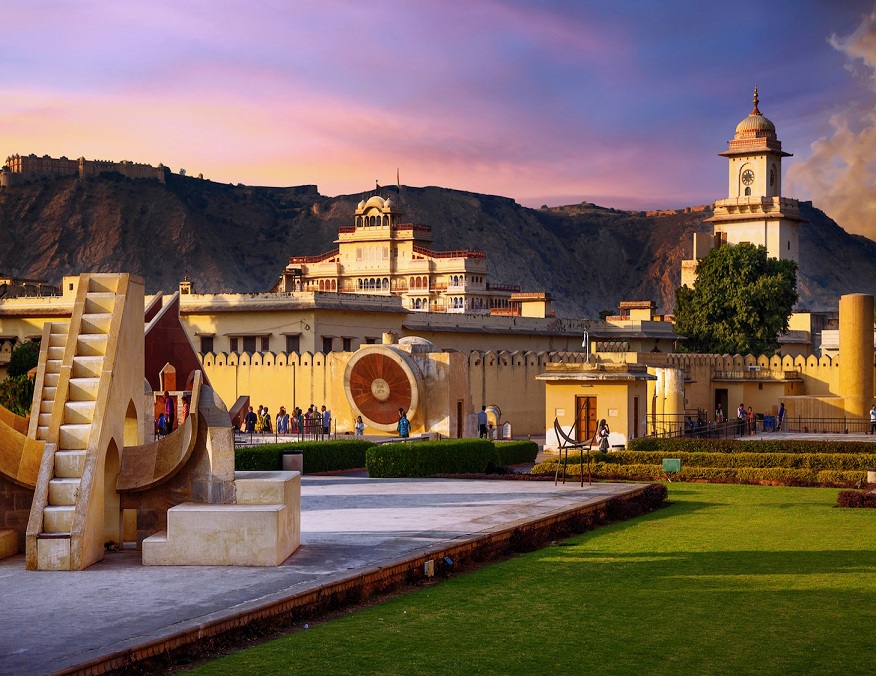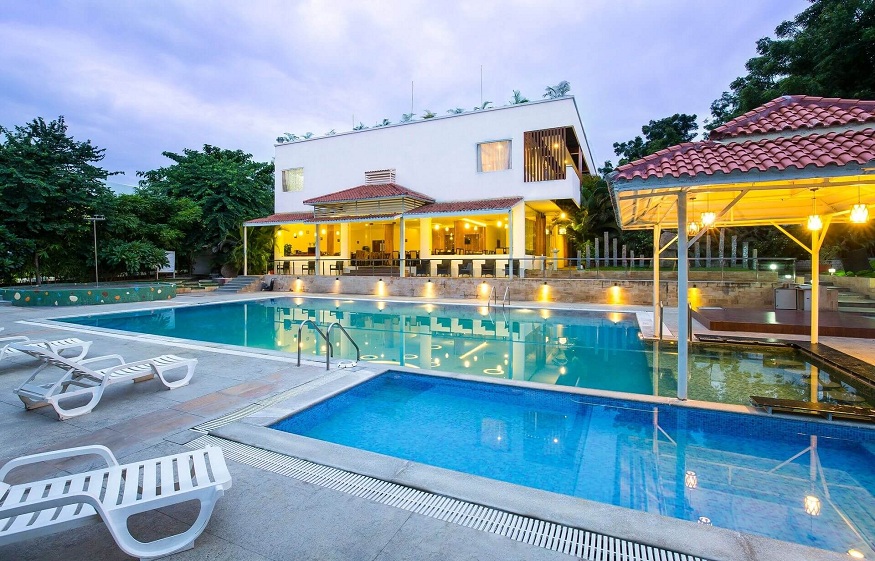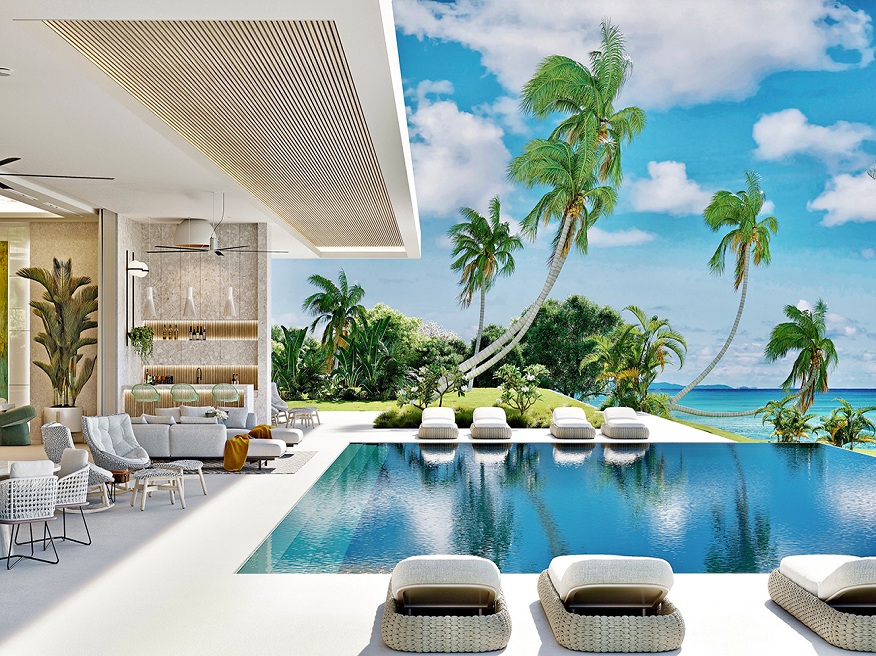The vibrant city of Jaipur, known as the Pink City, is renowned for its rich cultural heritage and architectural marvels. The capital of Rajasthan, Jaipur, boasts many historical landmarks, stunning palaces, and ancient forts that attract visitors from around the world. Experience the grandeur of Jaipur and also get the chance to stay at one of the remarkable places of Jaipur like Samode Haveli Jaipur. This article delves into Jaipur’s top attractions and landmarks, providing a comprehensive guide for anyone looking to explore the city’s fascinating past.
1. Amer Fort: The Crown Jewel of Jaipur’s Heritage
A Royal Legacy
Perched atop a hill overlooking Maota Lake, Amer Fort is undoubtedly one of the most iconic landmarks in Jaipur. The Rajput Maharajas and their families lived in this beautiful fort, which Raja Man Singh built in the late 16th century. The fort is an architectural masterpiece, blending Rajput and Mughal styles, with intricate carvings and stunning artwork adorning its walls.
Sound and Light Show
Amer Fort comes alive every evening with a spectacular sound and light show, narrating the history of the fort and the legends of the Rajput rulers. The show, available in both Hindi and English, provides an enchanting experience for visitors, as the fort’s walls are illuminated with colourful lights and captivating stories.
2. Jantar Mantar
An Astronomical Marvel
The Jantar Mantar in Jaipur, a UNESCO World Heritage Site, is the largest and best-preserved of the five astronomical observatories built by Maharaja Sawai Jai Singh II in the 18th century. This remarkable complex features a collection of large-scale astronomical instruments constructed to observe and measure celestial phenomena accurately.
Instruments of the Stars
Visitors to the Jantar Mantar can marvel at the incredible precision and ingenuity of the instruments, such as the Samrat Yantra (the world’s largest sundial), the Jai Prakash Yantra (a two-hemispherical instrument for measuring celestial coordinates), and the Ram Yantra (a cylindrical instrument for measuring celestial altitudes). A guided site tour provides fascinating insights into the astronomical knowledge and techniques the Rajputs employ.
3. Hawa Mahal
An Architectural Masterpiece
The iconic Hawa Mahal, or Palace of the Winds, is an extraordinary example of Rajput architecture. The palace’s remarkable front, built in 1799 by Maharaja Sawai Pratap Singh, contains 953 small windows, or jharokhas, decorated with elaborate latticework. The purpose of these windows was to allow the royal women to observe the bustling streets and festivals of the city while remaining unseen.
A Breathtaking View
Visitors can climb to the top of the Hawa Mahal to enjoy a panoramic view of Jaipur and the surrounding hills. The palace’s interior also houses a small museum showcasing artifacts and miniature paintings from the royal era.
4. Nahargarh Fort
A Majestic Fortification
Nahargarh Fort, situated on the edge of the Aravalli Hills, is a prominent landmark in Jaipur. Built-in 1734 by Maharaja Sawai Jai Singh II, the fort provided an essential defence for the city. The fort’s name, Nahargarh, means “abode of tigers,” reflecting its original purpose as a hunting lodge for the royals.
Exploring the Fort
Nahargarh Fort offers visitors an opportunity to explore its impressive ramparts, featuring panoramic views of the town below. The fort complex also includes the Madhavendra Bhawan, a two-story palace once employed by the royalty as a summer retreat. The palace’s intricately decorated rooms, connected by a network of corridors, provide a glimpse into the opulent lifestyle the Rajputs enjoy.
5. Jaigarh Fort
A Symbol of Strength
The imposing Jaigarh Fort, built in 1726 by Maharaja Sawai Jai Singh II, stands atop the Cheel ka Teela hill, overlooking the Amer Fort and the surrounding valley. The fort’s strategic location and massive walls reflect its primary role as a defence structure, safeguarding the royal treasures and the city of Jaipur.
Attractions within the Fort
Jaigarh Fort is home to many notable sites, like the world’s largest cannon on wheels, the Jaivana Cannon, once a logo of the Rajput’s military prowess. Additionally, visitors can explore the fort’s extensive armoury and museum, showcasing a set of swords, shields, and other weaponry from the Rajput era.
6. Albert Hall Museum
A Victorian Marvel
The Albert Hall Museum boasts a powerful collection of artifacts, including sculptures, paintings, textiles, and ceramics, showcasing the various cultural heritage of Rajasthan. The Albert Hall Museum, also referred to as the Central Museum, is housed during a stunning Indo-Saracenic style building constructed in 1887 to commemorate the visit of the Prince of Wales.
An Eclectic Collection
The museum’s beautiful architecture, featuring domes, arches, and stone carvings, may be a testament to the blending of Indian and European design elements.
7. Jal Mahal
An Enchanting Oasis
The Jal Mahal, or Water Palace, is a stunning architectural gem in Man Sagar Lake. Constructed in the 18th century by Maharaja Madho Singh I, the palace served as a hunting lodge and summer retreat for the royal family. The palace’s elegant red sandstone facade, with its arched windows and chhatris (domed pavilions), appears to float on the lake’s serene waters.
A Picturesque Sight
While the interior of the Jal Mahal is not accessible to the public, visitors can admire the palace’s enchanting beauty from the lake’s edge or during a boat ride on the tranquil waters. The Jal Mahal also serves as a habitat for migratory birds, making it a popular spot for birdwatching and photography.
8. Galtaji Temple
A Spiritual Haven
Hindus honour the historic Galtaji Temple complex, which is hidden away within the Aravalli Hills. The complex consists of several temples, shrines, and natural springs, with the most temple dedicated to the Hindu god of wisdom, Ganesha.
The Monkey Temple
Galtaji Temple is known because the Monkey Temple due to the various rhesus macaques that live there. Visitors can observe these playful creatures up close while exploring the temple complex but should exercise caution with their belongings.
Conclusion
In conclusion, Jaipur’s rich heritage is reflected in its stunning architectural landmarks and cultural attractions. These top attractions offer visitors a chance to delve into the fascinating history and traditions of the Rajput royals while also experiencing the vibrant spirit of the Pink City. Among its many historical landmarks and stunning palaces, one notable gem is the Samode Haveli Jaipur. This exquisite hotel captures the essence of royal Rajasthan, offering a luxurious and immersive experience for visitors.




